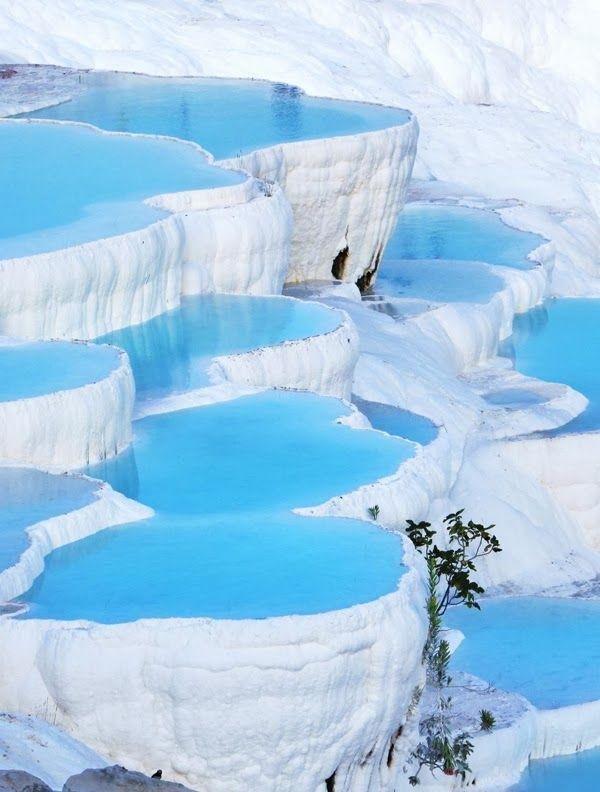
Travertine versatile, due to various causes and conditions, chemical reaction is a rock formed by deposition. Pamukkale thermal source that constitute these geological phenomena cover a wide area. In this region temperatures ranging from 35-100 C 17 hot water areas. Pamukkale thermal source is a unit within the regional potential. Source, used since ancient times.

After exiting from the source of thermal water, travertine is 320 m long with a channel and the beginning from here, up to 60-70 m.that is the part of the cokelmen travertine floors poured and the average 240-300 m. way.
Energy 35.6 0C temperature of water in contact with the oxygen in the air is high in calcium hydrogen carbon dioxide and carbon monoxide settles during flying leads to the formation of calcium carbonate and travertine. The sediment in the form of a gel in the first place. Chemically the reaction; We(HCO3)+O2 ACO+CO2+CO+H2O form. In our body many times and many times settles in prostration calcium carbonate, which initially is in the form of a soft gel.

Over time hardens, and travertine. However, be visited by the visitors on the floor and played, yet soft to the touch calcium carbonate in the form of oppression, the dissolution of the leads. As travertine is provided to control the thermal water within a particular program. Greater amounts of water, which is poured out in the same place for a long time and therefore unpleasant to the moss in travertine and causes pollution. In the formation of whiteness, weather conditions, heat loss, and the propagation time of the flow is effective. Deposition, thermal water reaches equilibrium with the carbon dioxide in carbon dioxide in the air continues until
Place in the analysis, the welding head above the water on average the amount of carbon dioxide 725mg/1, while when this amount of water left travertine 145mg/1 is decreased. Likewise, similarly calcium bicarbonate 1200 mg/1 to 400 mg/1 falls. Likewise, we 576/8mg/1 is decreased. The results of this analysis, according to 1lt. 499.9 mg of water on the travertine. CaCO 3 is settles. This quantity is 1 1/sec. 43191g per day for water. Means of deposition. Average density is 1.48 g/cm 3 which occupies. The average flow rate of water 466.21/sec. 2 13584m area that can be bleached. It is difficult in practice to fulfill these requirements. However, according to this theoretical approach, in the years 1mm. can be bleached thick 4.9 km 2 area.